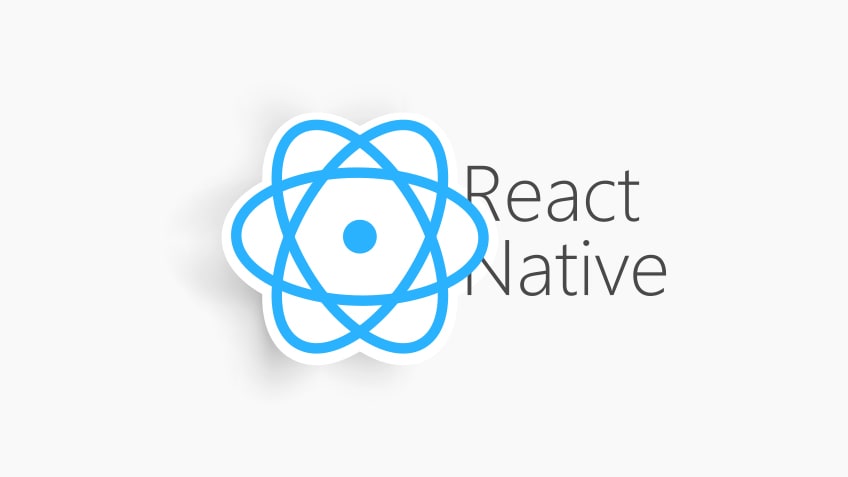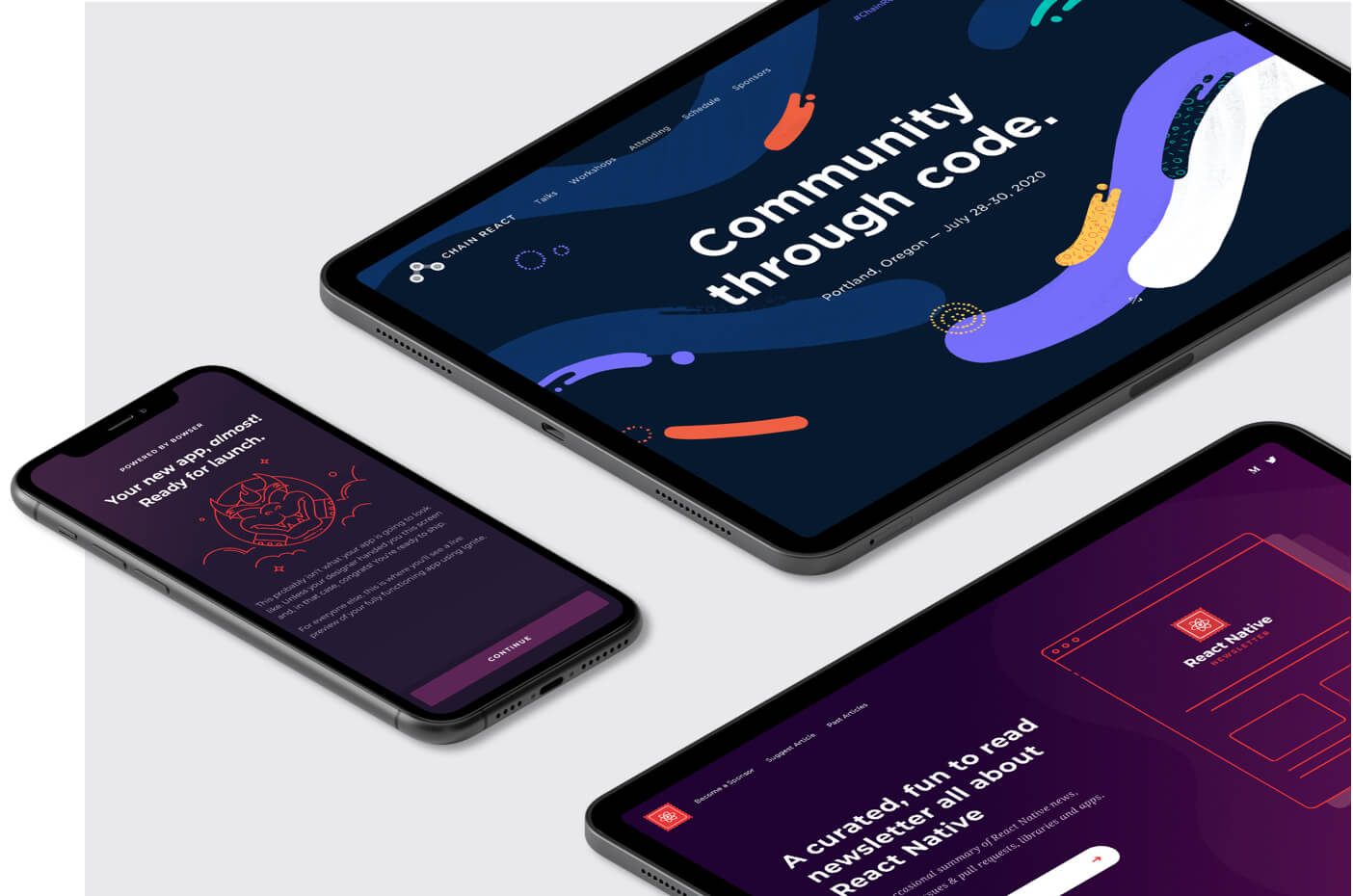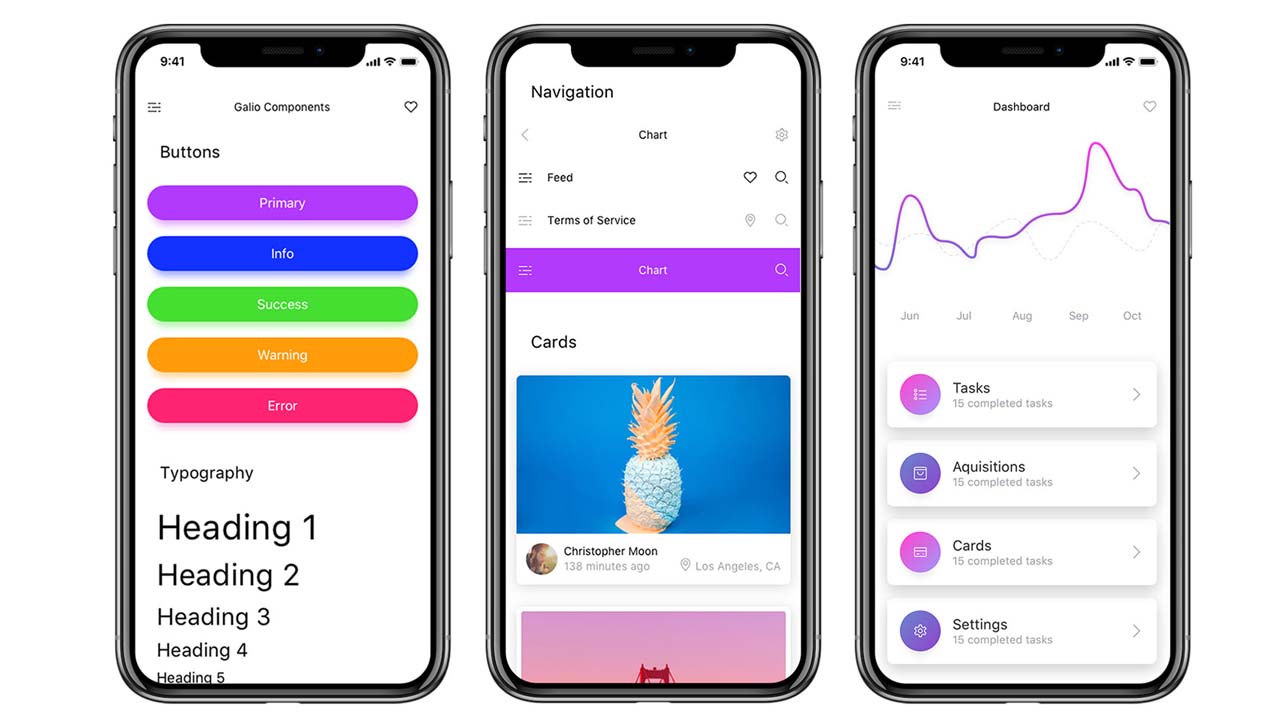React Native, a Facebook-created open-source app development framework that has been popular in the worldwide market for quite some time. Discord, Walmart, Facebook, and even Instagram are examples of today’s biggest businesses that employ React Native to create distinctive mobile applications for their consumers. When it comes to popular React Native users, one more name has recently been added to the list: Shopify.
What is React Native?

Facebook announced React Native in 2015. It’s a JavaScript framework for creating actual, natively rendered mobile apps for iOS and Android. It’s built on React, Facebook’s JavaScript toolkit for creating user interfaces. But, instead of being aimed at browsers, it’s aimed at mobile platforms. In other words, web developers can now create mobile apps that look and feel fully “native” while using the JavaScript library. Further, because most of the code you create can be shared between platforms, React Native makes it simple to build for both Android and iOS at the same time.
React Native applications, like React for the Web, are written in JSX, a combination of JavaScript and XML. The React Native “bridge” then calls the native rendering APIs written in Objective-C (for iOS) or Java (for Android). As a result, your app will appear and feel like any other mobile application since it will be rendered using genuine mobile UI components rather than web views. React Native offers JavaScript interfaces for platform APIs, allowing your React Native apps to utilize platform capabilities such as the phone camera or the user’s location.
React Native now supports iOS and Android and has the ability to extend to other platforms in the future.
How does React Native work?

React Native allows you to create native cross-platform mobile apps using JavaScript. Like React, React Native lets developers design declarative user interfaces in JavaScript, for which it internally creates a hierarchical tree of UI components or a virtual DOM in React parlance. React Native, unlike ReactJS, converts the virtual DOM into mobile native views utilizing platform native bindings that connect with application logic written in JavaScript. Although the target platforms for our purposes are Android and iOS, community-driven initiatives have introduced React Native to additional platforms like as Windows, macOS, and Apple tvOS.
Why it is possible to say that React Native is the future of Shopify mobile app development?
Shopify initially took into account React Native for mobile app development in 2015. But the technology was not popular at that time. As the library’s performance improved over time, the corporation began to see the benefit.
In 2018, Shopify purchased Swedish eCommerce business Tictail, a social shopping platform that allows customers to discover rising designers from across the world. Another aspect influencing their decision was the fact that they were already using React throughout their web products. And later that year, they redesigned one app, Arrive, and discovered that it crashed less than it did in iOS App. It also compelled the business to release an Android version of Arrive.
Mobile at Shopify in 2021
Shopify has always believed in employing cutting-edge technology to help them advance at a faster rate. That is why they are always the primary contributors to certain technologies that they believe are creative. Namely Ruby, Rails, Kubernetes, Rich Media are some that Shopify has invested their money in developing.
Shopify was already utilizing React Native to create its online applications at the time. However, with advancements in app development, the corporation discovered that the majority of its consumers purchased via their mobile devices. Not only that, but Black Friday and Cyber Monday sales were also conducted via mobile devices. As a result, Shopify decided to release three mobile app versions for their users: Arrive, Point of Sale, and Compass.
Here’s what the organization discovered after implementing React Native in three app development projects:
- Arrive was once just available for iOS customers, but Shopify saw the need for the Android platform as well. As a result, React Native was utilized to create an Android version of the program, and to everyone’s astonishment, the identical code was reused. Arrive’s Android version cost the corporation nearly nothing to launch.
- The iOS version of the Point of Sale application was left to the native team, while the Android version was constructed using the React /native framework. Even with a CPU threshold of 1.5GHz, the Android version performed admirably.
- The firm finally opted to utilize React Native for constructing all of its versions using the Compass, and they saved a significant amount of time and money owing to code sharing capacity.
Besides, Shopify’s acquisition of Tictail encouraged them to use React Native after witnessing its rapid growth. They were already utilizing the framework for online apps, and that prior experience enabled them to make a more rapid transition from web to mobile using the same framework.
In the next few years, Shopify will not rewrite their native apps as the decision depends on each app team. But they will continue to employ native engineers to build the core of React Native, create platform-specific components, and continue to learn about the features of each platform. This involves substantial native knowledge.
Collaboration and Open Source
Shopify is supporting Software Mansion and Krzysztof Magiera (co-founder of React Native for Android) in developing React Native open-source.
In the future, Shopify will work with Facebook’s React Native team on automation, third-party libraries, and management of certaim modules through Lean Core.
We’re collaborating with Discord to speed up the open source of FastList for React Native (a framework that only draws list items that are in the viewport) and optimize it for Android.
What makes Shopify React Native an ideal choice for mobile app development?
Shopify opted to create all of its mobile applications on React Native due to the growing number of mobile apps that utilize it. We can confidently state that Shopify’s future is in good hands.
Shopify React Native offers several functionalities that make it an ideal choice for mobile app development:
Code Sharing fatures
The first merit of Shopify React Native is that it provides users code-sharing function. It is evident to say that Shopify React Native has changed the game. iOS and Android, for example, are two platforms for which developers need to understand several languages: Android SDK and Java for Android apps, Objective C, and Swift for iOS apps. Thanks to Reactive Native, this process has been streamlined.
With Shopify React Native, developers can develop iOS and Android apps by sharing the same code. This potential solution can also be useful in building web applications. This ultimately saves enterprises a lot of time and money in developing effective mobile applications across several platforms.
Open Source

Open Source is another benefit that Shopify React Native offers. Shopify React Native is an open-source framework that has a large community constantly supporting the framework’s functions and bugs. Thus, you can access many further features and have the chance to suggest improvements to develop the framework at any time.
Further, because you have a robust community of native developers and JS specialists, you may have a thorough understanding of all the publicly accessible tools and components that might potentially make your app development project successful.
Easy to learn
Potentially, Shopify React Native is easy to learn. This benefit helps developers a lot as the framework employs JavaScript as the programming language, which is easy for beginners to learn, even when they have little or no hands-on experience in development.
As a result, merchants don’t have to search for a team of experts to make an app using Shopify React Native. Anyone who basically understands JavaScript can assist you in developing an efficient and feature-rich mobile application for use on a variety of top platforms.
UI Responsive functionality
What’s the sense of creating a mobile application that doesn’t prioritize the user interface? In reality, UI and UX are now the two most important parts of any mobile application’s success, and Shopify React Native has you covered!
You may significantly lower the total loading time of your app by using the Shopify React Native framework. Further, the framework provides good development settings and is compatible with virtually all mobile devices. You may also obtain live reloading with the React Native Framework. What does this imply?
That is, you may see your application in real-time while updating the source code. It is really useful when you want to see how a specific feature will influence your application.
Live updates
Live updates are extremely useful. It helps the users receive updates via phone calls from developers at a fast speed. There is no need to go through the app store update cycle with Shopify React Native, which is made feasible via Javascript.
Fast enhancements
Shopify React Native is a great solution that allows developers to create mobile apps quickly. Because React Native is an open-source framework, developers may use a variety of local components. As a result, the development period is reduced, resulting in rapid development.
Compatible
Interoperability is the final but not least advantage of using Shopify React Native to design mobile apps. Many third-party plugins are compatible with React Native. That means you may add more features to your mobile app while freeing up space and expanding its capabilities.
Zoom in, zoom out, screen rotation, and other features provide a seamless experience to your app users, which finally makes your app/brand popular and lucrative in the market.
When will we not default to using Shopify React Native?
In some cases, Shopify React Native might not be the default option for developing a mobile app on Shopify. For example:
- Installing on older hardware (CPU 1.5GHz)
- Significant processing
- Ultra-high performance
- Multiple background threads.
Reminder: Low-level libraries, such as many open-source SDKs, will continue to be fully native. When we need to get close to the metal, we can always write our own native modules.
Wrapping up
Shopify showed that it will continue to invest in Shopify React Native app development. But this does not imply that they will rewrite all of their apps in React Native. Shopify’s apps will continue to rely on native libraries and frameworks.
As a result, it is possible that this Amalgamation of Shopify React Native will strike the IT industry. And, we can declare that future mobile app development at Shopify is totally safe and secure using React native.
Magesolution is well-known for providing leading Shopify development services. With experienced developers in the field, we are seriously committed to making excellent Shopify solutions. CONTACT US now for further details!



